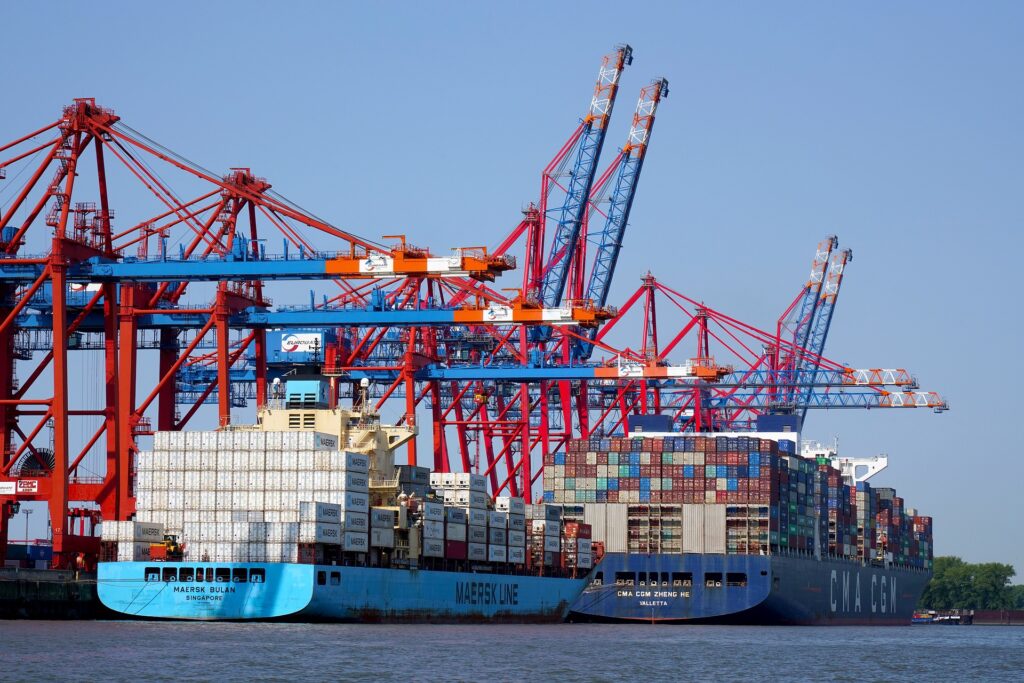Focusing on a company’s own emissions targets is proving insufficient to reach the U.N.’s 2030 and 2050 climate goals. “To reach net zero … supply chain emissions must be addressed by businesses globally,” said the World Business Council for Sustainable Development (WBCSD), a CEO-led organization, in a paper published in June. “Decarbonization within the supply chain plays a critical role in realizing net-zero ambitions.”
In July, Siemens-sponsored content published in the Harvard Business Review estimated “up to 90% of a product’s emissions occur directly in the company’s supply chain rather than in its own operations.” In a May blog, Mike Hayes, KPMG International’s climate change and decarbonization leader, said supply chains “can often constitute more than half of a company’s total [emissions] footprint.”
However, the World Economic Forum (WEF) played down the potential impact in a May article. “Unless you are an energy-intensive heavy-industry player such as steel and manufacturing,” it said, “chances are greenhouse gas emissions from your operations are only one part of the emissions generated as a whole.”
Nevertheless, the WEF stressed, “It’s time that organizations start to proactively implement a strategy to decarbonize their supply chains.”
Local and multinational companies may have no option but to help suppliers “go green” to comply with international environmental requirements. In Egypt, that could be both a challenge and an opportunity. The country’s GDP is driven by construction, an industry with many feeders. Additionally, there is an increased focus on increasing local manufacturing. “The government gives top priority to industrial development,” Prime Minister Mostafa Madbouly said in April.” That opens the door for more investment in feeder industries across multiple sectors.

Challenging transition
Hayes of KPMG indicated suppliers often need support from their large customers when they want to lower their harmful emissions: “Many suppliers are small and medium-sized businesses, and lack the expertise or financial strength to independently put in place decarbonization initiatives.”
That brings up the first “thorny issue of who should pay,” said Hayes. That is critical for procuring companies as they “often have to persuade thousands of suppliers to participate in a net zero program.”
Another problem facing big companies is their suppliers may have to alter internal operations to generate accurate environmental data. “Working with general numbers (such as spending or volumes of goods purchased multiplied by emissions factors) helps create a general understanding of the supply chain [carbon] footprint,” Jeroen Scheepmaker, an associate director at Guidehouse, a consultancy, wrote in a post on news portal GreenBiz in November. This will “help identify the suppliers with the largest carbon exposure.”
To help decarbonize, suppliers must produce accurate emissions data to identify the most effective measures to reduce their carbon footprint. “Web-based instruments, such as Guidehouse Papaya, will bring the level of detail needed to start [decarbonizing] successfully,” said Scheepmaker.
Scaling those efforts to include all of a company’s suppliers would be more challenging than supporting a single feeder. According to Scheepmaker, multinationals can have 10,000 suppliers, which makes decarbonizing them all a nearly “impossible mission.” “Identifying the complete supply chain by mapping all the actors involved might already be challenging,” he said. “But making a robust inventory of all greenhouse gases is even more challenging.”
Further complicating supply chain decarbonization is that “most emissions [they generate] are related to [their own] suppliers.” A WEF report said suppliers of suppliers can have “a significant [environmental] multiplier effect.” Scheepmaker stressed that companies feeding feeder industries “must be included … in a meaningful way.”
Those challenges become even more significant if a supply chain involves several countries. “Global supply chains are complex, opaque and constantly shifting,” said Engie Impact, a management consulting company, in a March 2019 paper. “So it is not surprising that these emissions remain massively under-reported… and difficult to measure.”
Leading the way
Despite the challenges, some companies and industries are working with their suppliers to realize the U.N.’s climate ambitions. In January 2020, Microsoft announced plans to be “carbon negative” by 2030. Brad Smith, the company’s president and vice chairman, said on Microsoft’s website that environmental plans would include “our direct emissions and those for our entire supply and value chain.” That would consist of “expanding our carbon fee … to start charging not only our direct emissions, but those from our supply and value chains.” They would also make “carbon reduction” an explicit requirement in purchase agreements with suppliers.
Retail giant Walmart launched Project Gigaton in 2017 to “engage suppliers in climate action, along with NGOs and other stakeholders,” according to the Walmart website. “Through Project Gigaton, we aim to reduce or avoid one billion metric tons … of greenhouse gases from the global value chain by 2030.” So far, Walmart says it has achieved 57% of that target.
PepsiCo integrated efforts to decarbonize its supply chains with its environment, social and governance (ESG) framework, which “begins with the crops grown by our farmers and suppliers,” the company said on its website. “Our climate action strategy is focused on mitigation to reduce emissions and decarbonize our supply chain, and [building] resilience to reduce the vulnerability of our supply chain to climate change.”
Meanwhile, TetraPak provides “all its base material suppliers with training, support and material for [emissions] data collection,” said Scheepmaker.
In its sponsored article in July, Siemens said, “Many large corporations are already committing voluntarily to the decarbonization of their supply chains.” Most follow the Science Based Target (SBT) initiative, a global organization that sets environmental standards to generate “sufficient and reliable data to manage the transition efficiently.”
According to SBT, nearly 1,000 companies worldwide committed to the initiative’s guidelines. As a result, they have to apply those principles to their suppliers, ultimately creating a decarbonization roadmap. The Engie Impact report stressed that “by cascading SBT commitments, companies can drive consistency and accelerate progress” guided by science, “which tells us we only have a short time to address emissions.”

Building the ecosystem
The Engie Impact report highlighted the importance of encouraging and selecting suppliers that use clean energy to capitalize on their resources more efficiently and effectively than their counterparts.
The WEF outlined several steps large companies can take to help suppliers decarbonize quickly, as well as over the long term. The first is to connect suppliers to the Carbon Disclosure Project, an international nonprofit organization, SME Climate Hub, or the World Business Council for Sustainable Development.
Others are industry specific, such as Supplier Leadership on Climate Transition, a food and beverage initiative to coach suppliers on climate action and solutions. LEGO Group’s Engage2Reduce program is an in-house initiative to reward the toy block maker’s suppliers that reduce emissions.
Such partnerships would “provide insights into suppliers’ climate action maturity, enabling organizations to set [decarbonization] expectations,” noted the WEF paper. They would work in tandem with the SBT initiative.
Companies that want to decarbonize their supply chains should also consider their own strategy and resources. The WEF report said that includes having tools and resources to “leverage … data-driven [environmental] insights when selecting preferred suppliers.”
Additionally, companies and suppliers must work together to create decarbonization opportunities, as the WEF stressed that they operate in the same industry “so it’s often relatively easy to identify opportunities for decarbonization.” Companies also should incentivize their suppliers to decarbonize. The WEF paper said that includes public recognition, favorable payment terms, and other financial stimuli.
Meanwhile, companies need to pursue new business models where they reuse their waste, which would likely encourage suppliers to adopt sustainable business models. A case in point is Philips, which refurbishes and remanufactures medical equipment, and reuses previously purchased parts. That changed how suppliers operate, as they buy and recycle used materials, and resell them to Philips for use in upcoming products.
The WEF also noted that companies should aggressively market and publicize efforts to decarbonize their supply chains and even sign binding agreements to ensure suppliers reduce their emissions. Such contracts also could include financing for suppliers’ eco-friendly projects or equipment.
The Engie Impact report highlighted “carbon insetting,” where companies incentivize suppliers to adopt more eco-friendly technologies or practices that “result in a demonstrable reduction in carbon emissions.”
Tech factor
Siemens’ promoted content in the HBR stressed that digitizing a supplier’s operations to generate accurate climate data and sharing it with customers would not be sufficient to combat climate change. “We have to establish open, cross-industry standards to exchange trustworthy and secure [carbon footprint data] by using technologies such as crypto verification,” Cedrik Neike of the managing board at Siemens AG said in the article. “Only then can we act efficiently to reduce emissions in a sustainable way.”
However, that would require significant investment from the company. Neike stressed the importance of a “distributed [database] architecture with peer-to-peer data exchange using crypto-based trust technologies.” That system would ensure emissions data is accurate and available only to authorized parties.
The other investment would be developing a distributed storage system to collect all relevant environmental data from suppliers regardless of where they operate. Neike said the challenge is ensuring “local regulators verify that data stores comply with data-sovereignty requirements.”
The third challenge is to develop a standard user interface, authentication method and data transfer protocols for those with access to this global network. That includes the company, its suppliers, and suppliers of suppliers.
Expensive and mandatory?
Hayes of KPMG said many companies mistakenly believe that because decarbonizing supplier operations is complicated, it will automatically be costly to implement. “Such solutions may be far less expensive than imagined,” he said. “In some cases, no additional cost, particularly when it comes to a circular economy, energy efficiency and long-term renewable energy power purchase agreements that stabilize electricity supplies and prices.”
That erroneous perception might be hindering climate ambitions, as it makes companies more inclined to be “responsible for their own emissions,” leaving suppliers to decarbonize on their own. “A collaborative effort across the supply chain will produce a far greater reduction than the sum of each player’s individual efforts,” said Hayes.
Another major factor is ESG reporting guidelines, which will require companies to report on their efforts to help decarbonize their supply chains. Hayes said this would create “additional pressure.”
Egyptian listed companies must apply ESG reporting standards starting next year. That means they, too, must disclose their efforts to decarbonize supply chains. Patrick Mitchell, who has worked in shareholder intelligence for 30 years, stressed that companies should report progress regarding supporting supplier decarbonization. He told EQS Group, an international cloud provider, that “if companies do not engage in ESG properly … the cost of capital will go through the roof.”
Mitchell added that banks and other financing institutions are “already looking at ESG ratings,” and the lowest-rated companies will likely see their cost of debt rise significantly. The worst-case scenario, he said, would be that non-compliant companies “lose access to the green bond market.”








